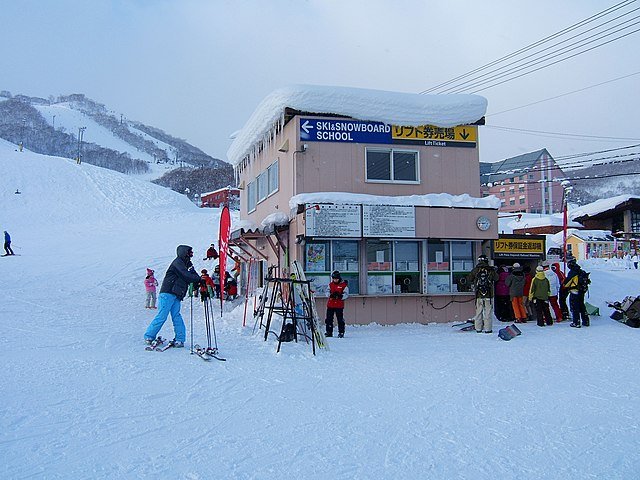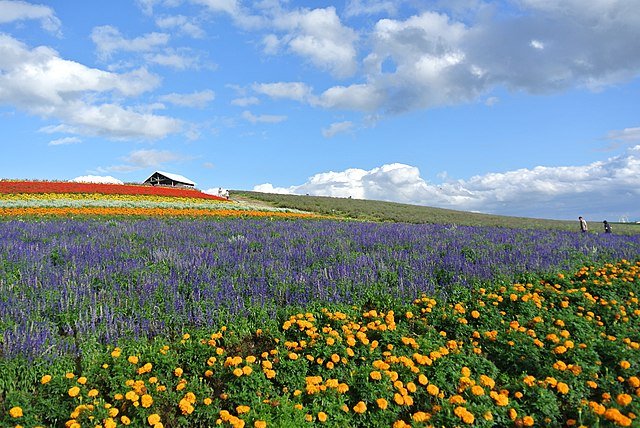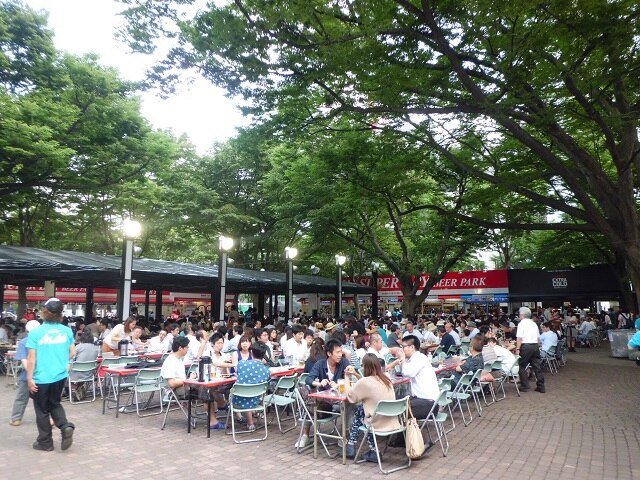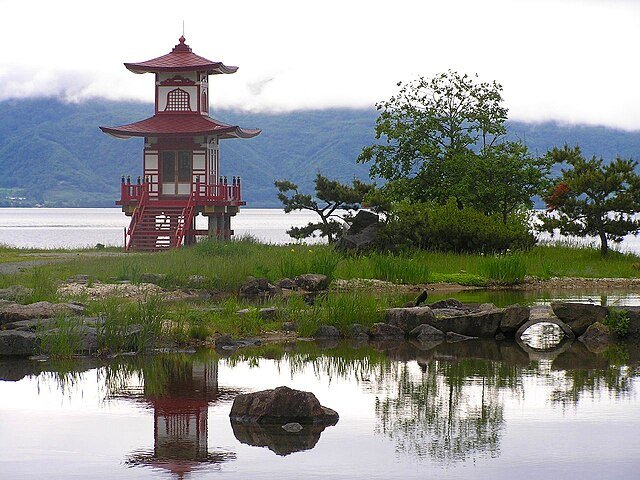You might be surprised to learn that Hokkaido—the northernmost island of Japan—supplies over half of the country’s dairy and seafood. But even more mind-blowing? Just a short drive from modern cities like Sapporo, you’ll find brown bears fishing for salmon in rivers so clear, they look like something out of a postcard.
After road-tripping through Hokkaido over several seasons, I’ve seen it all—from snow-covered peaks to flower-drenched valleys. If you’re thinking of visiting Japan and want something beyond the typical Tokyo-Kyoto route, this one’s for you.
Why Visit Hokkaido?
Let’s keep it real—Hokkaido feels like a different planet compared to the rest of Japan. While other regions buzz with temples and neon lights, Hokkaido offers room to breathe, explore, and reconnect with nature.
Here’s what makes it unique:
- Four distinct seasons—each offering a totally different vibe
- World-class skiing in winter (think fluffy powder!)
- Colorful flower fields in summer
- Fresh-from-the-sea cuisine, including legendary crab and sea urchin
- Natural hot springs surrounded by mountains
- Wildlife like deer, foxes, and even brown bears

Winter (December to March): Powder Snow & Cozy Hot Springs
Niseko: World-Class Powder Paradise
The moment I stepped off the gondola at Niseko Grand Hirafu, the silence hit me fIf you’re into skiing or snowboarding, Niseko is a name you’ll want to remember. This place gets over 15 meters of powder each season—and yes, it’s just as soft and fluffy as you imagine.
Quick facts:
- 4 ski resorts connected by lifts
- Night skiing available until 8:30 PM
- Lift passes from around ¥6,200 ($42 USD)
- Great rentals + English-speaking staff
Pro Tip: Book early! Hotels in Hirafu Village sell out fast—especially if you’re traveling in January or February.
Underrated Pick: Rusutsu Resort
About 30 minutes from Niseko, Rusutsu offers 37 trails with fewer crowds and amazing tree skiing. Honestly? It’s a gem most travelers overlook.

Summer (June to September): Flower Fields & Hiking Trails
Furano: Rainbow Flower Capital
Ever walked through a sea of purple flowers with a mountain view in the background? Furano in July is pure magic.
Best flower farms:
- Tomita Farm: Iconic rainbow fields (free entry)
- Flower Land Kamifurano: Tractor rides for kids and families
- Kanno Farm: Peaceful and perfect for photos
Visit Tip: Arrive early in the morning for soft lighting and fewer people. The golden hour views with Mt. Tokachi in the background? Unreal.
Daisetsuzan National Park: Hokkaido’s Wild Side
My favorite hike in Japan happened right here. I took the ropeway up Mount Asahidake and watched the sunrise light up snow-dusted peaks. Unreal.
Top hikes to try:
- Asahidake Trail: Accessible and breathtaking (4–6 hours round trip)
- Mount Tokachi: A bit tougher but worth it for the volcanic views
- Sounkyo Gorge: Waterfalls, short walks, and relaxing vibes
Important: Carry bear bells and check trail conditions before heading out!

The Food Scene? Oh, It’s Next Level
Seafood Lovers, Rejoice
I still dream about my first bite of Hokkaido king crab. Fresh, buttery, and eaten straight from a market stall in Sapporo.
Must-try dishes:
- Kaisendon: Seafood over rice with uni, ikura, and crab
- Genghis Khan: Grilled mutton served sizzling hot
- Soup Curry: Comforting, spicy, and packed with veggies
- Rokkatei Chocolates: Iconic local sweets you have to try
Best foodie spots in Sapporo:
- Nijo Market: Great for breakfast bowls
- Ramen Alley in Susukino: Slurp-worthy miso ramen
- Sapporo Beer Garden: All-you-can-eat grilled lamb and local beer
Sapporo’s Brewery Scene
Beyond the famous names, Hokkaido is home to indie breweries using local hops and fresh spring water. Otokozushi Brewery stood out for me—think creative flavors and friendly vibes.
Hokkaido By Season: What to Expect
| Season | Best For | Avg. Temps | Travel Tips |
| Winter (Dec–Mar) | Skiing, onsen, snow festivals | -15°C to -5°C (5°F to 23°F) | Bring thermal layers + boots |
| Spring (Apr–May) | Cherry blossoms, mild hikes | 5°C to 15°C (41°F to 59°F) | Trails may still have snow |
| Summer (Jun–Sep) | Hiking, flowers, cycling | 15°C to 25°C (59°F to 77°F) | Book early—peak travel time |
| Autumn (Oct–Nov) | Foliage, fewer crowds | 5°C to 15°C (41°F to 59°F) | Gorgeous colors in Daisetsuzan |
Getting Around + Budget Tips
Transportation Options
JR Hokkaido Rail Pass: ¥16,950 for 5 days—worth it for long-distance travel
Car Rental: Great if you’re exploring Furano or Shiretoko (budget ¥6,000+ per day)
Domestic Flights: Reach remote areas like Wakkanai or Kushiro fast
Budget-Saving Hacks
- Travel in shoulder seasons (May–June, Sept–Oct)
- Stay at minshuku (local guesthouses) instead of luxury resorts
- Eat like a local—supermarket meals in Hokkaido are fresh and cheap!
- Look for discount ski lift passes at convenience stores

Hidden Gems That Blew Me Away
Lake Toya: Hot Springs with a View
Imagine soaking in a steaming onsen, gazing at snow-dusted peaks across a glassy lake. That’s Lake Toya. Calming, cozy, and less crowded than other hot spring spots.
Shiretoko Peninsula: A Real Wilderness Escape
Designated a UNESCO World Heritage Site, Shiretoko feels untouched. Think bear sightings, whale-watching cruises, and drift ice walks in winter.
Sample Itineraries
Winter Adventure (7 Days)
- Days 1–2: Explore Sapporo and try street food
- Days 3–6: Ski and soak in Niseko
- Day 7: Relax in Lake Toya before heading out
Summer Explorer (10 Days)
- Days 1–2: Food crawl in Sapporo
- Days 3–4: Flower fields in Furano
- Days 5–7: Hike in Daisetsuzan
- Days 8–9: Wildlife spotting in Shiretoko
- Day 10: Return to Sapporo
Budget Breakdown
| Style | Daily Budget |
| Budget | ¥8,000–12,000 ($55–80) |
| Mid-Range | ¥15,000–25,000 ($100–170) |
| Luxury | ¥30,000+ ($200+) |
Includes lodging, transport, meals, and activities.
FAQs
Q1. When is the best time to visit Hokkaido?
Depends on your interests! Go in winter for skiing and snow, summer for hiking and flowers, autumn for foliage, and spring for cherry blossoms.
Q2. Is Hokkaido good for first-time visitors to Japan?
Absolutely! It’s quieter than Tokyo or Osaka, super friendly to travelers, and full of natural beauty.
Q3. Can I get around without speaking Japanese?
Yes, especially in tourist areas like Sapporo and Niseko. Signs often include English, and translation apps help a ton.
Q4. Is it expensive to travel around Hokkaido?
You can travel on a budget! Use trains or buses, eat at markets, and stay in minshuku or business hotels.
Q5. What’s a must-try food in Hokkaido?
Kaisendon—seafood rice bowls loaded with crab, uni, and ikura. You haven’t lived until you’ve had one in Sapporo.
Parting Words: Why Hokkaido Stays With You
There’s something about Hokkaido that just sticks with you. Maybe it’s the deep powder in Niseko, or the scent of lavender drifting across a field in Furano. Or maybe it’s that moment of stillness in a hot spring, surrounded by mountains.
This island invites you to slow down, breathe deeply, and take in the magic of every season. And trust me—once you’ve been, you’ll already be dreaming of your next trip back.
Ready to explore Hokkaido?
Pick your season, pack that backpack, and prepare for one unforgettable journey.
If you’ve got any questions or want custom tips, feel free to shoot me a message. Happy travels!
良い旅を

